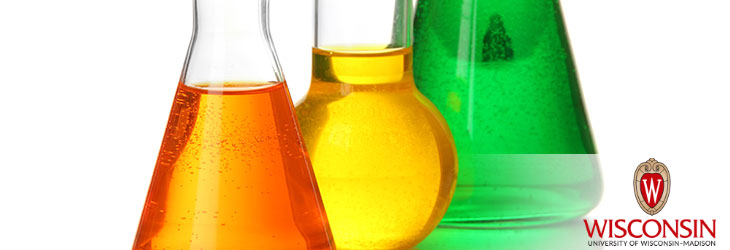Materials & Chemicals

Sustainable Organic Aerogels for Insulation
WARF: P120283US03
Inventors: Shaoqin Gong, Alireza Javadi, Zhiyong Cai, Ronald Sabo, Qifeng Zheng
The Wisconsin Alumni Research Foundation (WARF) is seeking commercial partners interested in developing methods for producing aerogels that contain nanoscale cellulose fibers and are suitable for an array of applications.
Overview
Aerogels are the world’s lightest solid materials made by the removal of liquid from gels. Such materials may contain up to 99 percent air and combine unique properties like high porousness and excellent thermal, acoustic and electrical insulation.
Researchers have conventionally focused on making inorganic aerogels from silica, clay and metal oxide, and these materials have found use in clothing, building insulation and aviation. NASA, for instance, has developed silica-based aerogels for thermal insulation of spacesuits and Mars rovers.
However, inorganic aerogels often suffer from intrinsic brittleness, which limits their usefulness when tough, low-density materials are required. Also, the supercritical drying process used to make aerogels requires the use of organic solvents, which also is challenging to scale up.
Researchers have conventionally focused on making inorganic aerogels from silica, clay and metal oxide, and these materials have found use in clothing, building insulation and aviation. NASA, for instance, has developed silica-based aerogels for thermal insulation of spacesuits and Mars rovers.
However, inorganic aerogels often suffer from intrinsic brittleness, which limits their usefulness when tough, low-density materials are required. Also, the supercritical drying process used to make aerogels requires the use of organic solvents, which also is challenging to scale up.
The Invention
UW–Madison researchers have developed hybrid organic aerogels with desirable insulation properties. They are made by combining a water soluble polymer and a carbon nanofiller such as graphene oxide nanosheet with cellulose nanofibrilliated fibers (CNFs) derived from biomass. The organic polymer, such as polyvinyl alcohol (PVA), is cross-linked to form a gel and water is removed by freeze-drying. The surface of the aerogel can by further modified.
Applications
- Green building insulation materials
- Aviation suits and planes
- Packing materials and shipping containers
- Life jackets, clothing and blankets
- Filters
- Industrial cleanup
Key Benefits
- Highly porous and lightweight
- High compressive strength and strain-to-failure value
- Excellent insulation properties
- Cellulose nanofibrilliated fibers are derived from sustainable biomass.
- Freeze-drying is a green process.
- Aerogels may highly repel or absorb moisture.
Stage of Development
The development of this technology was supported by WARF Accelerator. WARF Accelerator selects WARF's most commercially promising technologies and provides expert assistance and funding to enable achievement of commercially significant milestones. WARF believes that these technologies are especially attractive opportunities for licensing.
Additional Information
For More Information About the Inventors
Publications
For current licensing status, please contact Jennifer Gottwald at [javascript protected email address] or 608-960-9854